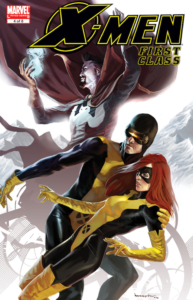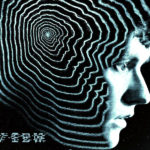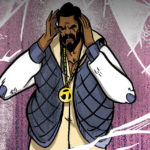
“I have hours, only lonely
My love is vengeance
That’s never free.”
(“Behind Blue Eyes”, The Who)
I dedicated the last articles to the early years of the X-Men. How they started, and how they ended, before reprints occurred. Before we start with Chris Claremont and his incredible, nearly 20-year run on different titles, tie-ins, and spin-offs, we take a look at another interpretation of the X-Men’s origin.
The Creators

X-Men First Class of 2007 was the first volume of this run and contained eight issues. Jeff Parker wrote them, and Roger Cruz is responsible for the fantastic art. For Jeff Parker, First Class was one of his first Marvel assignments. Before he started this limited series, he wrote Agents of Atlas. Another superhero team, which is composed of characters first introduced in the 50s and 60s. The name Atlas is referring to Marvel’s predecessor Atlas Comics. (Wikipedia, 2017)
Roger Cruz did a lot of work for Marvel Comics. He also has a DeviantArt page which is worth checking out. The impressive artwork Cruz provides does not just come from the pages of comic books. They are creative, and he has a great sense of body language. I also like the different facial expression he posted on this page. DeviantArt is something one should visit more often. It is a great place for inspiration. And you can download the images to work on your inking skills, for example.
But let’s get back to the topic at hand: X-Men First Class:
The Characters
As I said, I read the first volume which consists of eight issues. As the comicvine post about the reading order of the X-Men states: “This series is particularly good to give to younger kids who want to read X-Men.” (TEC2030, 2017).
This time the characters are introduced by Bobby Drake aka Iceman. He writes a letter to his parents and tells them about his last adventure. We get to know what he thinks about his classmates and what they can do. In the original X-Men by Jack Kirby and Stan Lee, the parents did not realize that their children are mutants. This way the kids cannot openly talk about their school and their experiences. This is prominently featured in the original run, as Angel’s parents come by for a visit. Bobby seems to have had his coming out a while ago, and it is nice to see, how he talks about the things going on.

Throughout the whole first volume, the feeling of an actual school and the fact that we have to deal with young adults is powerful. It starts with the introduction page of every issue. There, every character gets a little introduction. Just a picture of their faces, and a description of their abilities. These pages are used by the characters themselves to draw on and to make comments. Each issue a different person, of course. What do they think about them? Who do they like? It’s a cute addition to having this kind of insight. You can get a lot out of these little comments regarding relationships and friendships.
Besides Bobby, we are presented with the original roster of X-Men. Warren aka The Angel, Scott aka Cyclops, Jean aka Marvel Girl, Hank aka The Beast, and the Professor, of course. Cerebro did get an upgrade and is now able to teach the students. This aspect of “school” was utterly ignored in the original run, which always bothered me a bit. There were no real classes, just training sessions and such. But now, as we saw in the first three X-Men movies as well, the students have classes with homework, tests, etc.
The Stories

The team has mostly to deal with new villains. The first one, for example, is a bush. Yes, you heard right. They have to fight a bush. An Azalea bush, to be exact. From this point on I knew I read a book, dedicated to children. This is not a complaint; it’s nice to have some issues you can give to your children as an introductory to those great characters. Not that I have any children, but still. But something is missing. Usually, you have a grander scheme or topic behind the story, where the authors and artists implement timely discussions. I didn’t get this feeling with this issues.
At first, I couldn’t put my finger on it. It was like a bland salad. You know there is a taste missing, but you don’t know what else to put in. It was the same with this story until I read a review on The Literary Omnivore (McBride, 2013): “In this case, it’s a series of straightforward adventures what doesn’t particularly explore any deeper themes.”
And that’s precisely it. Jeff Parker doesn’t go more in-depth. Most stories start with everyday life situations of the team. They go on vacation, are thrown into an adventure that takes place in the Professor’s head, or they go out. They accidentally stumble upon an adventure and therefore their villains, and that’s it. The issues are fun to read but don’t expect great character moments or even an improvement from Stan Lee’s Jean Grey problem. I wrote in an earlier article that even the Professor had a crush on Jean, which was one of the creepiest moments in those early issues. Unfortunately, it is not getting better now:
“But in one story, Professor X orders Cyclops and Jean to rest at a rented house in Florida. Cyclops mopes, but Professor X winks at him telepathically and tells him he arranged for Cyclops to have alone time with Jean. Out of context, it’s a fine, if a little teen comedy, moment, but we don’t get into Jean’s head much in this collection, making her feel like a prize more than a member of the team. This improves—there is a story about Angel dating Scarlet Witch where Jean tells Pietro, her brother, off for trying to control her behavior—but it still doesn’t sit well.” (McBride, 2013)
The End
One thing I appreciated was the crossovers with other Marvel characters. This way you get a real sense of a vast Universe. I understand that at the beginning Stan Lee and Jack Kirby couldn’t do as many crossovers because the relevant characters had to be introduced first. Now we have stories with Doctor Strange, Curt Conners, and a Skrull. Even the old villains get to have a cameo in the third issue.
There is not much left to say about this series. It’s a great introduction to the characters, especially for children. But to be honest, I am looking forward to the Chris Claremont run and how he reinvented the X-Men – gave them impactful stories and a diverse roster of characters. Next month we will talk about X-Men issues #94 to #110.
Sources
- Agents of Atlas. (n.d.). In Wikipedia. Retrieved September 19, 2017, from wikipedia.org
- TEC2030. (2017, April 02). Guide to Reading X-Men Comics [Blog post]. Retrieved from comicvine.gamespot.com
- McBride, C. (2013, September 27). Review: X-Men: First Class — Volume 1 [Blog post]. Retrieved from theliteraryomnivore.wordpress.com



